


Capoue Amphithéatre
English Translation
Merci à Carlo Raso pour les photographies
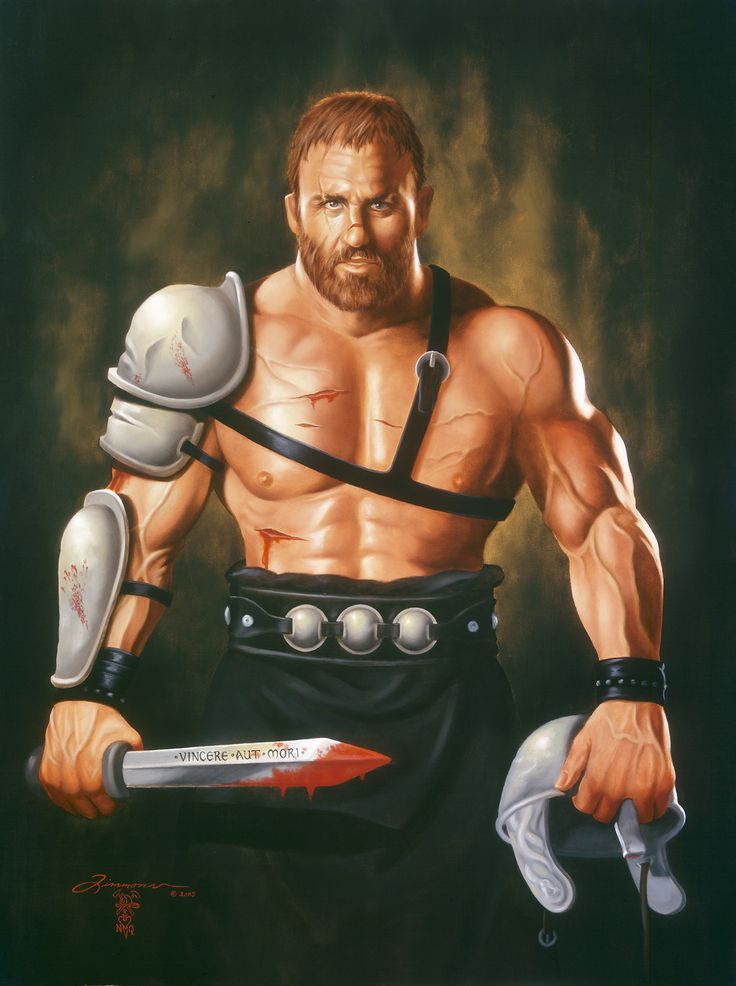 |
Historique Voir ICI
History Click HERE
Article sur les Amphithéatres Romains et Articles sur les Gladiateurs
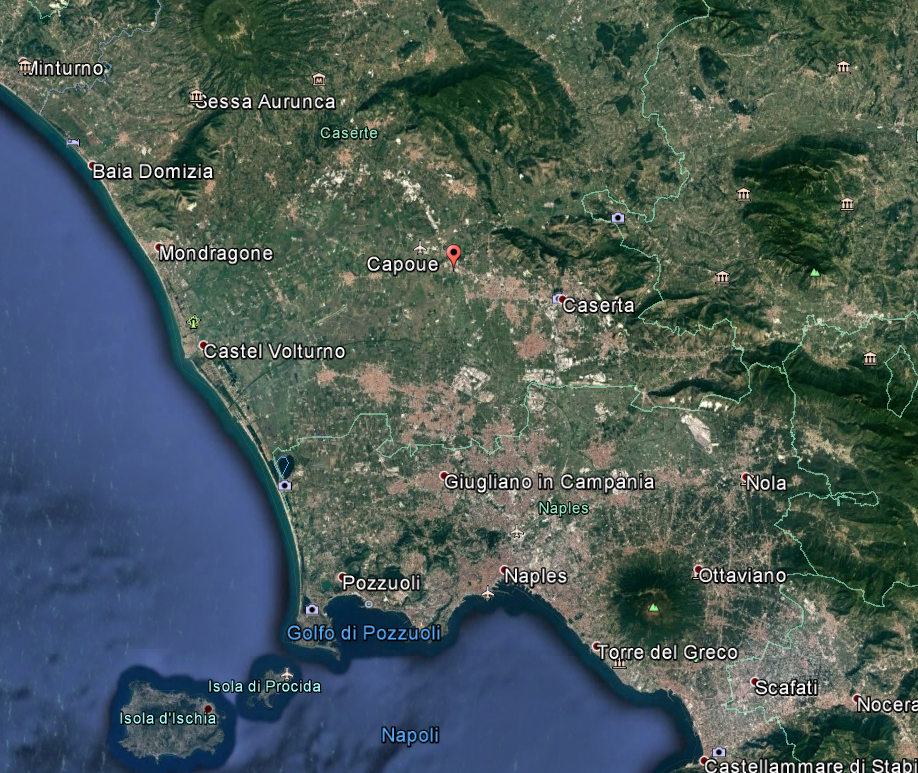 |
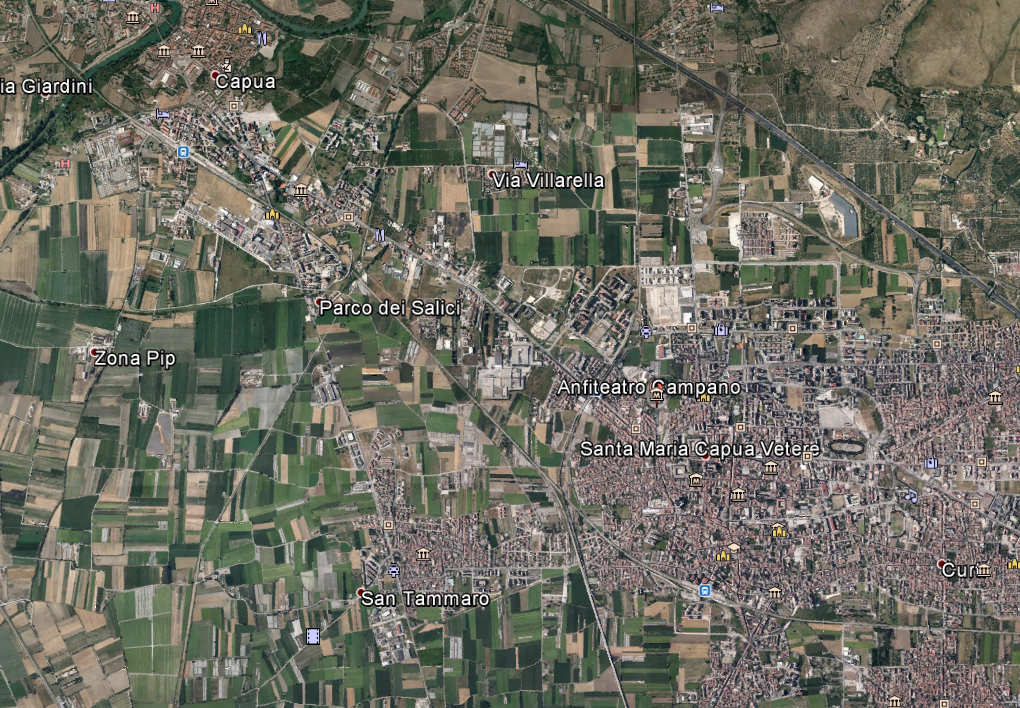 |
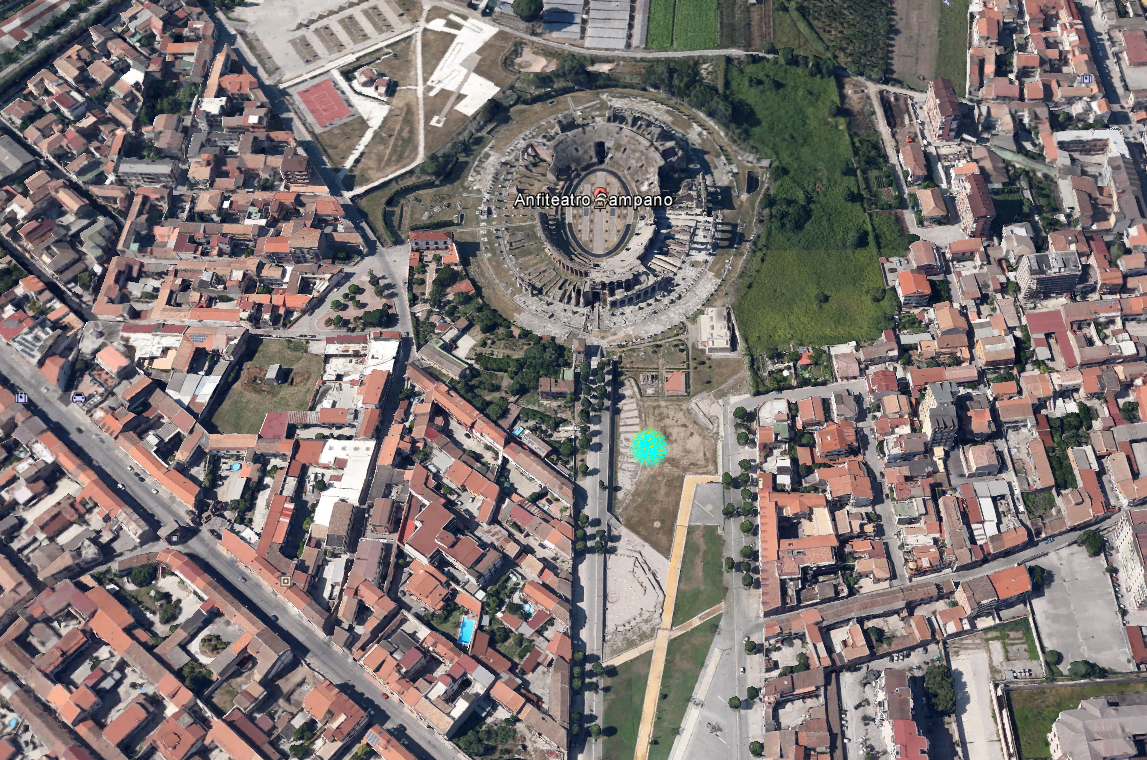 |
| Azur Fondations du 1e Amphithéatre |
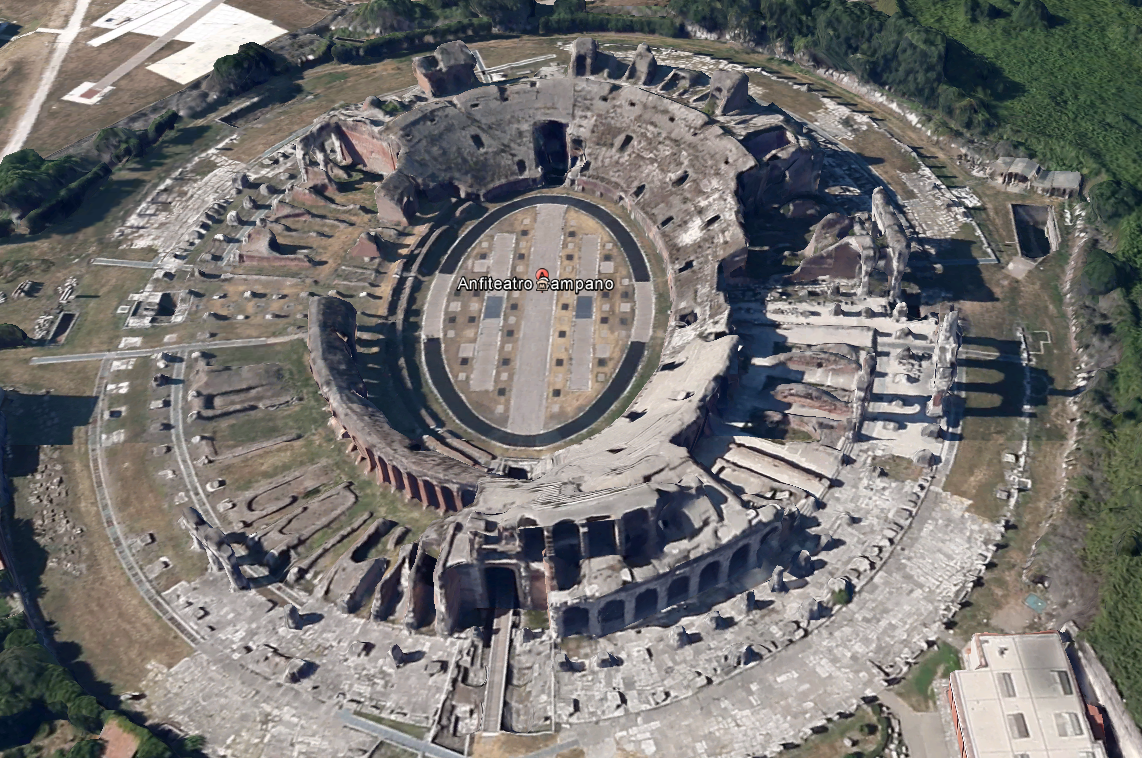 |
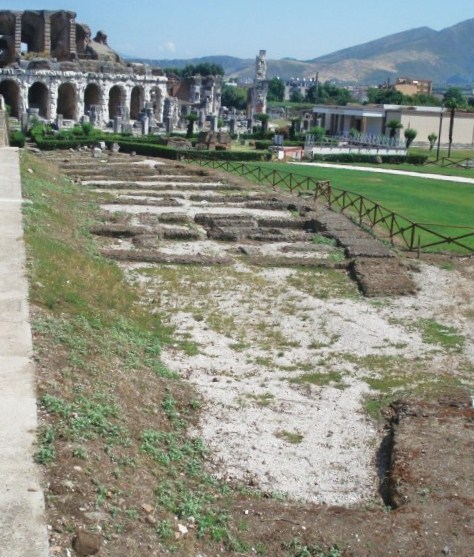 |
| Fondations du 1e Amphithéatre |
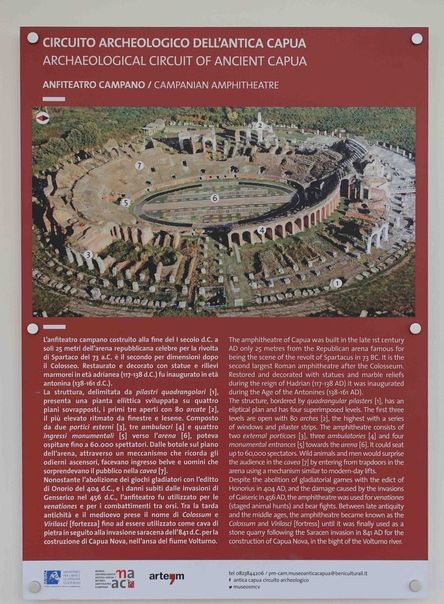 |
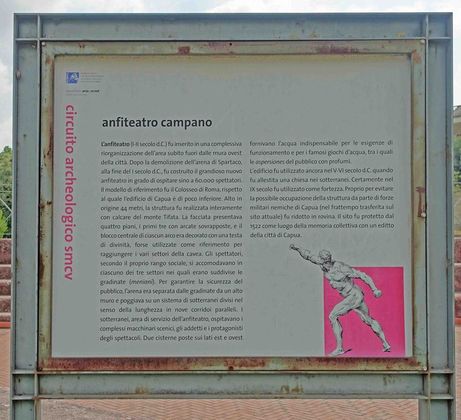 |
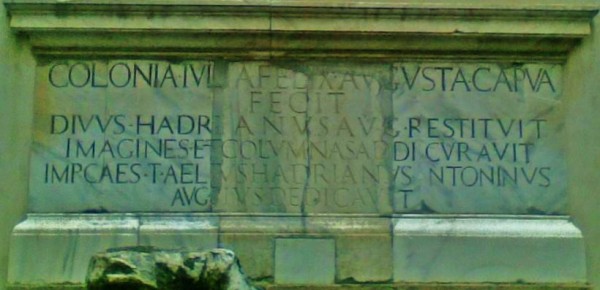 |
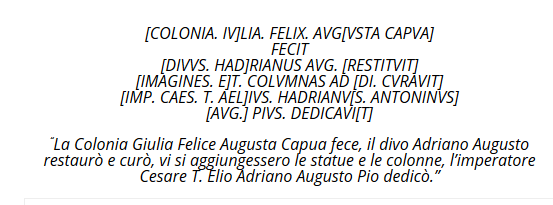 |
Voir Aussi See Also
Les amphithéatres romains
Le Ludus
Les Gladiateurs
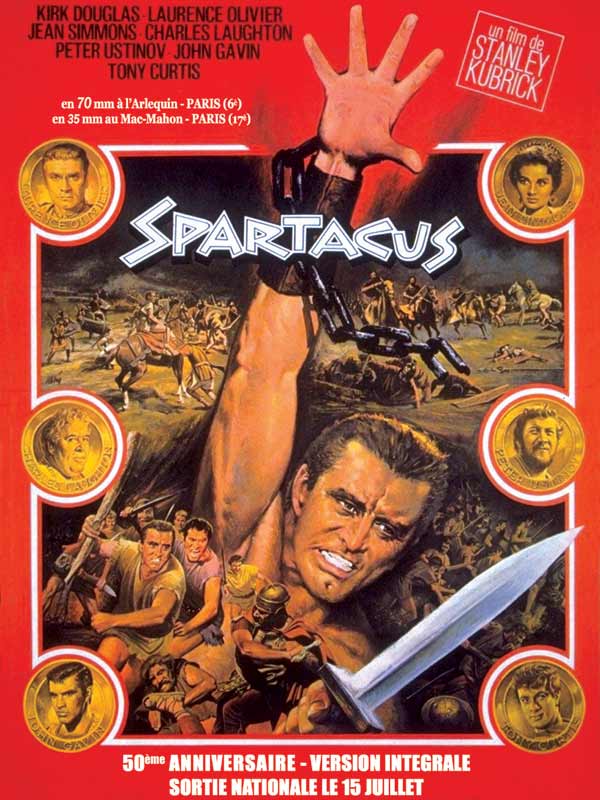 |
| Film |
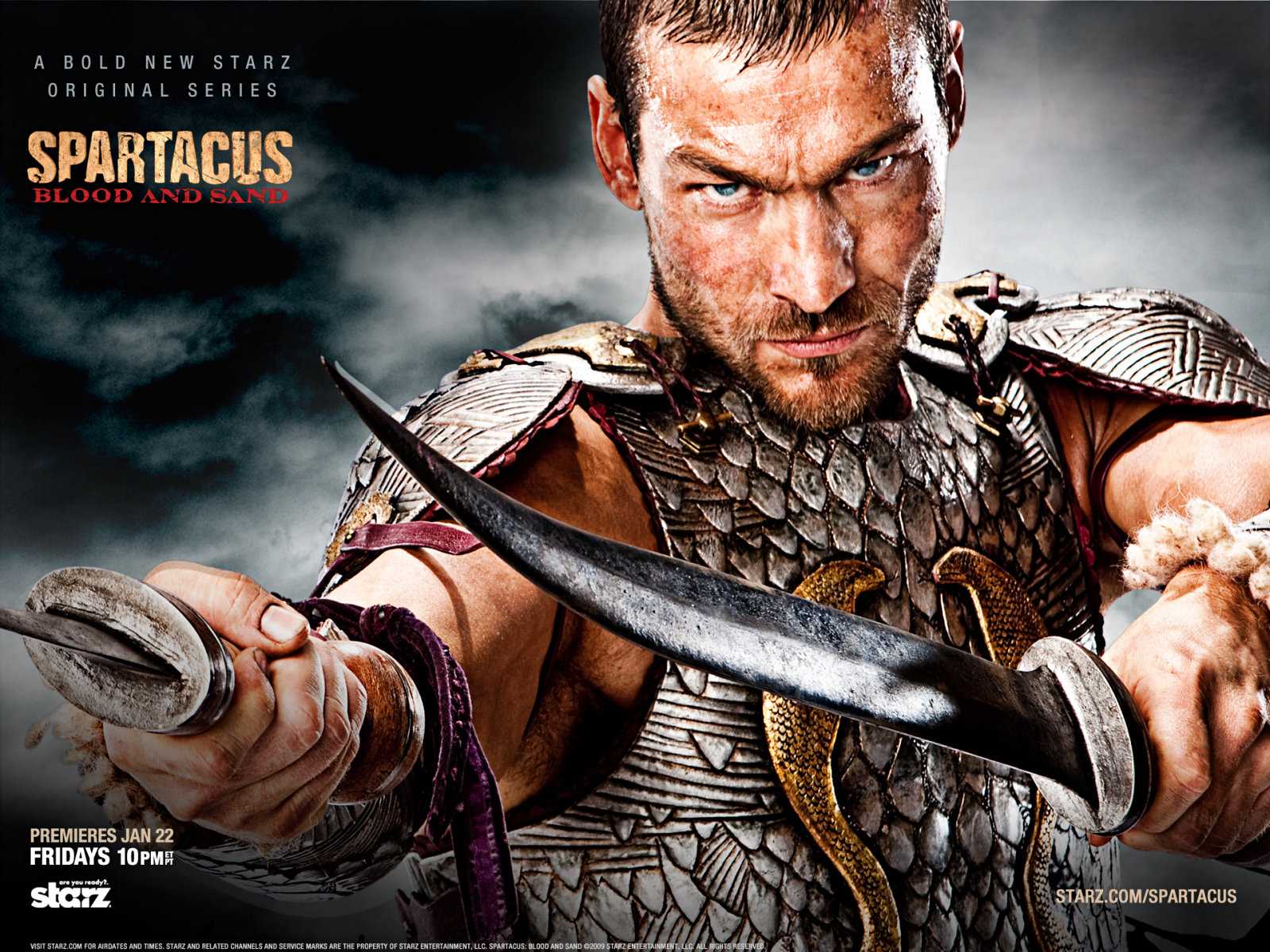 |
| Serie |
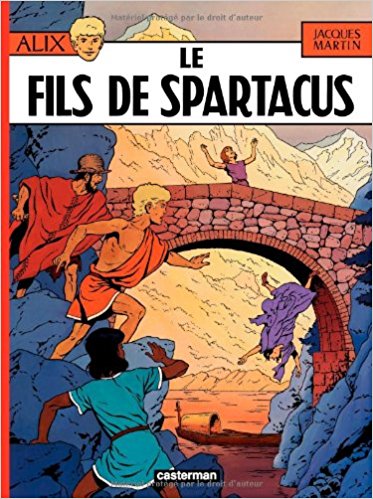 |
| Bande dessinée |
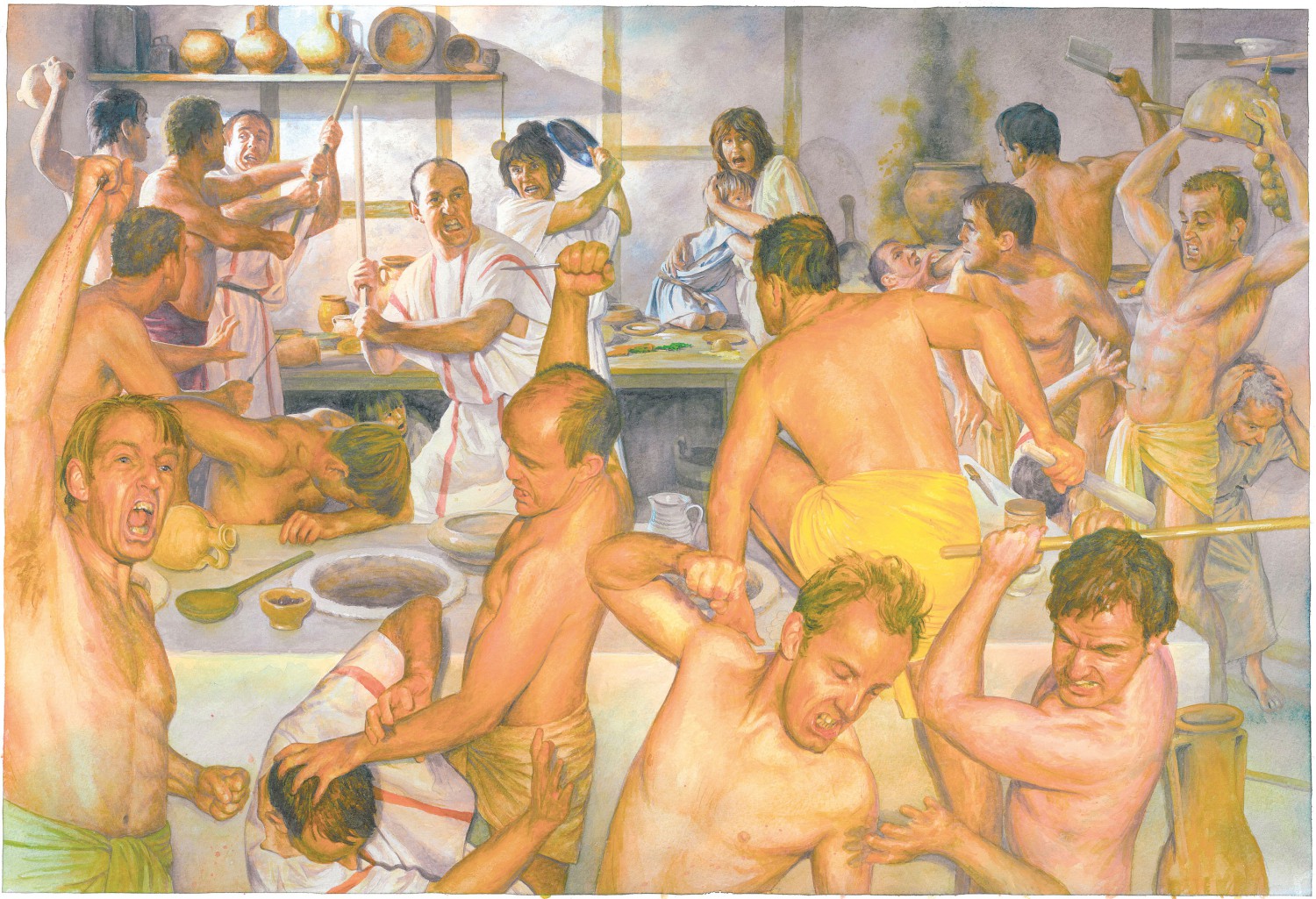 |
|
Un ludus devait former des combattants qui puissent gagner des combats aussi il était dans l'intérêt du lanista de maintenir ses gladiateurs au sommet de leur condition physique. Ainsi, il y avait un personnel de cuisine chargé de préparer des repas sains pour les gladiateurs. Riches en protéines et en graisses, les gruaux d'orge (polenta) transformés en gruau constituaient une denrée alimentaire saine et stimulante. Les gladiateurs étaient communément appelés hordearii, «orge-hommes» en effet l 'orge fourn issait une bonne couche de graisse qui aidait à prévenir les saignements abondants si les artères vitales étaient touchées lors des combats . Cette planche représente le moment où le groupe de quelque 200 gladiateurs, principalement Thraces et Gaulois, irrités par le traitement inhumain de leur propriétaire,se revoltent et cherhcer à s'échapper .Cette scène chaotique se déroule dans la cuisine du ludus de l'école de gladiateurs de Cnaeus Lentulus Batiatus à Capoue. Since the purpose of a ludus was to produce prime prize-fighters, it was in the interest of the lanista to maintain his gladiators at the peak of physical condition. Thus, there was a kitchen staff charged with preparing wholesome meals for the gladiators. High in protein and fat, barley groats (polenta) made into a gruel, was the mainstay of the diet, a food believed to be healthy and muscle promoting. Gladiators were commonly known as hordearii, ‘barley-men’, which reflected the cereal’s benefits in furnishing a good layer of fat that helped prevent heavy bleeding if vital arteries were sliced in combat. This plate depicts the moment when the group of some 200 gladiators, mainly Thracians and Gauls, resentful of their owner’s inhumane treatment, executed their plan to escape. The chaotic scene is set in the kitchen end of the mess hall at the gladiatorial training school of Cnaeus Lentulus Batiatus in Capua. The gladiators are overpowering the guards (1), who are armed with batons (2); this was all done to great effect in Kubrick’s epic film Spartacus of course, with a lengthy scene (cut in the original) of a man being drowned in a pot of piping-hot soup. Except for loincloths (3), the gladiators are naked; they are clean shaven and their hair is cut short. From the kitchen they grab everything that can service as weapons, the knives and cleavers (4) and spits (5), and even the heavy, wooden pestles (6) used for grinding the grain for the daily porridge. And so it was the gladiators hacked and beat their way out of the school of Batiatus, and then fled in the direction of Mount Vesuvius. |
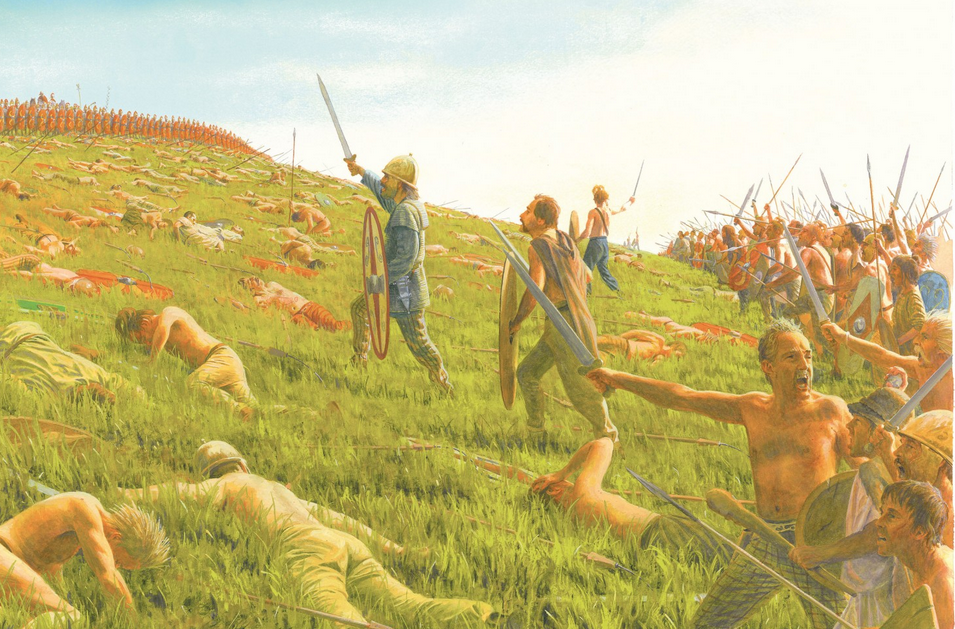 |
|
A la fin de 73 av JC Les revoltés se séparent alors que spartacus décide de monter vers le Nord de la péninsile Son lieutenant Crixus part vers la mer Adriatique ou il est defait et tué à la bataille de du Mont garganus par une armées consulaire . Amors que Krubick dans son fils le decrit comme un fidèle lieutenant les autreurs anciens le dépeigne autremant . Lors de la bataille de Garganus il s'ecrit je suis Spartacus ; Vetu comme un chef de guerre gaulois il monte avec ses troupes pour la 3e et avant derniere fois à l assaut des lignes romaines On voit le general romain Gellius agé de64 ans au milieu à Cheval . Nous voyons en premiere ligne les gaulois cheveux herissés . Parmi les revoltés on trouve des germains mais aussi des femmes et des bergers ettoutes diverses sortes d'esclaves Towards the end of 73 bc Crixus and his followers separated from Spartacus. The following spring he and his entire force were destroyed near Mount Garganus (Promontorio del Gargano) in north-eastern Apulia after being compromised by one of the two consular armies sent to quash the slave rebellion, that of Lucius Gellius Publicola. It is of interest to note here that in Kubrick’s Spartacus, contrary to ancient sources, Crixus is always portrayed as Spartacus’ loyal lieutenant, right up to the famous scene after the final battle when he is one of the first to stand up and call out, ‘I am Spartacus!’ This illustration shows the moment of the third (penultimate) attack by Crixus’ army. The rebels are beginning their slow ascent of the hill, atop of which stand the waiting Romans. Crixus (1), on foot and looking very much the Gaulish warlord, is prominent in front; the elderly Gellius (2) who was about 64 years old, on horseback, is slightly to the rear of the Roman (double) battle line. The steep hillside is strewn with the dead and the dying. Crixus’ followers are mainly Gauls (3) or Germans (4), some sporting their native style of dress and weaponry, others in a mélange of native and Roman equipment, yet others looking more like herdsmen (5) than warriors. A few women (6) combatants are evident too. |
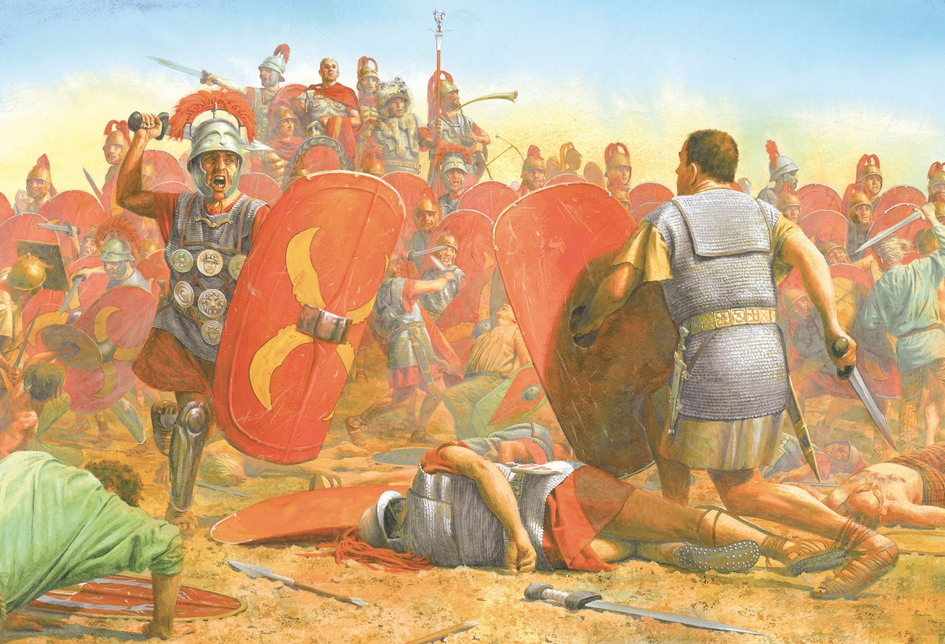 |
|
Au printemps 71 Av JC apres avoir ternue en alerte les Romains pendant 2 ans Spartacus mene son dernier combat face au troupes de crassus sur le Fleuve Silarus Cette scéne représente son dernier combat . Tel un gladiateur dans l arène il a déja tué un centurion et s'apprete à combattre le second sous le regarde de spartacus. Avant la bataille il a tué le cheval qui lui était présenté en disant que vainqueur il en aurait d 'autre alros que vaincu il n'en aurait plus besion . Ils sance dans la bataille en cherchant à atteindre Crassus Protégé par son escorte. il combat avec un gladius alors que Le centurion est armé d'un scutum . Il possède comme armure une Lorica Hamata. le sfilm Spartacus a une fin différent Hollywood oblige And so it came about, in the springtime of 71 bc, that Spartacus died on his feet fighting, surrounded by Romans. Not far away was a grassy knoll whereupon Crassus stood and watched. On that fateful day instead of meeting the enemy on horseback, Spartacus refused to mount his horse, a symbol of aristocratic generalship, when it was led up to him. Dramatically proclaiming that he would have plenty of horses to ride if he won and no need of one if he lost, he then plunged his sword into the magnificent animal. Then, bloody sword in hand, he plunged fearlessly into the fray on foot and almost cut his way to Crassus before he was cut down. He did, however, kill two centurions that came to Crassus’ rescue. He died not as a general of an army, but as a gladiator in an arena. Thus ended the battle by the River Silarus, when the Spartacan rebellion went down into the dust of Roman history. This illustration, in some respects, is reminiscent of a scene from the arena. Spartacus (1) has just cut down one of the centurions (2) and is about to engage the second (3). In the background, much like a spectator at the Roman games, stands Crassus (4). Meanwhile round and about, almost a blur in fact, rages the final battle between the slaves and the masters. As for Spartacus’ arms and armour, he wields the gladius (5) and scutum (6) of an ordinary Roman legionary, and likewise wears a legionary’s mail shirt, the lorica hamata (7). He is bareheaded and battle scarred. |
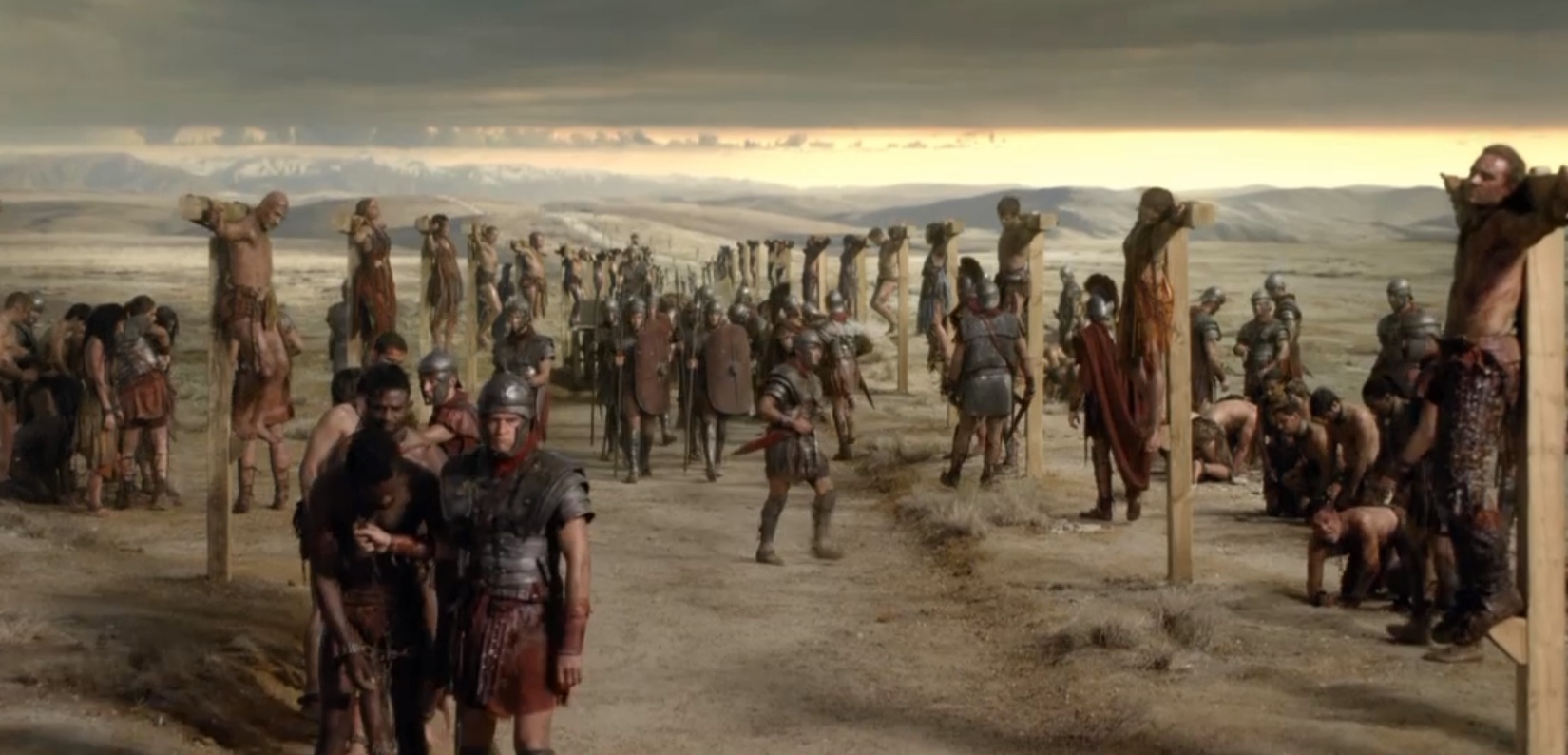 |
| La fin Last stand |
| Osprey |
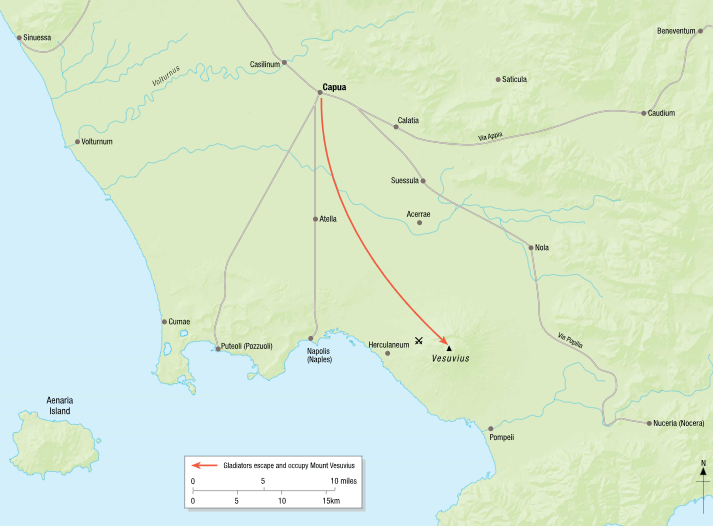 |
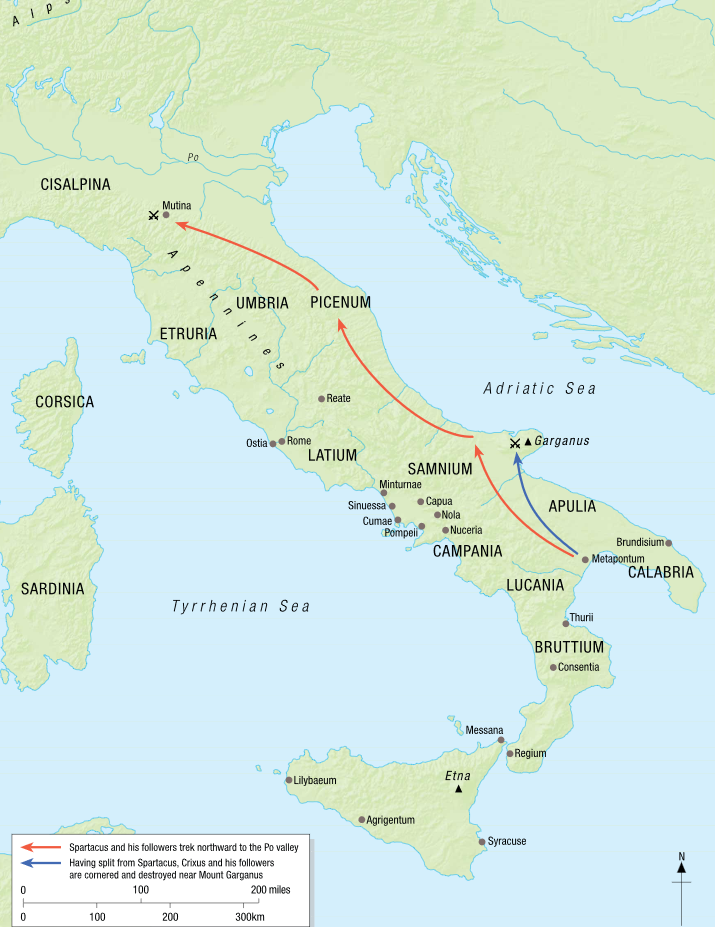 |
| 1 fuite vers le Vésuve | 2 apreas avoir la cote du coté de Metaponte La troupe se sépare avec Crixius qui es battu au Garganus alors que spartacus tente de rejoindre le Nord de L'europe |
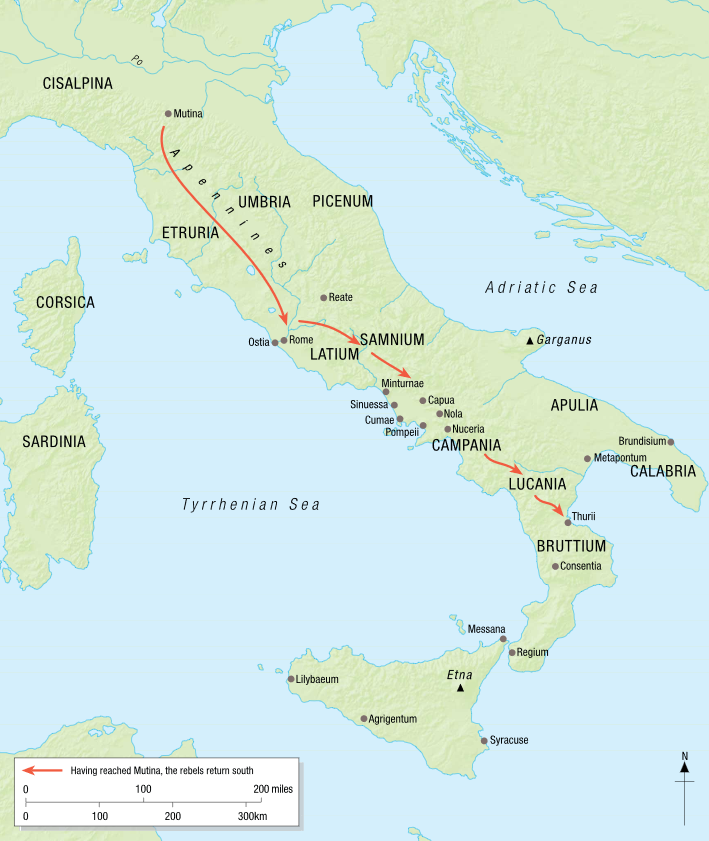 |
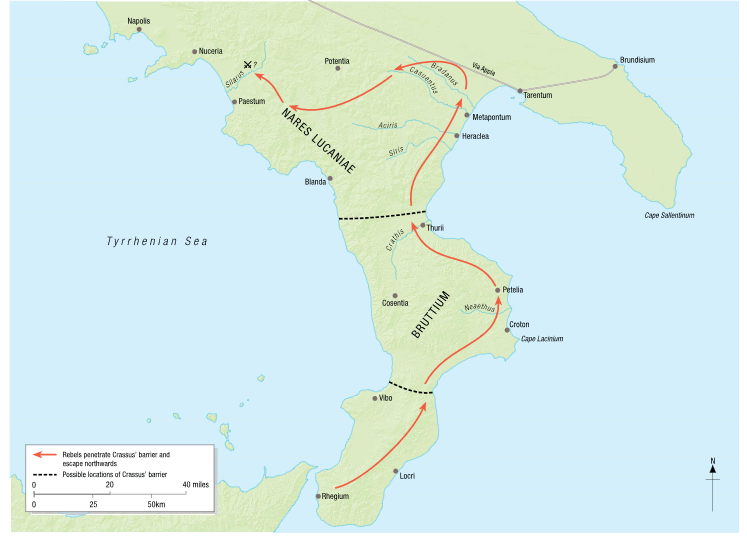 |
| 3 Retour vers le sud | 4 Bataille Finale sur le fleuve Silaurus |